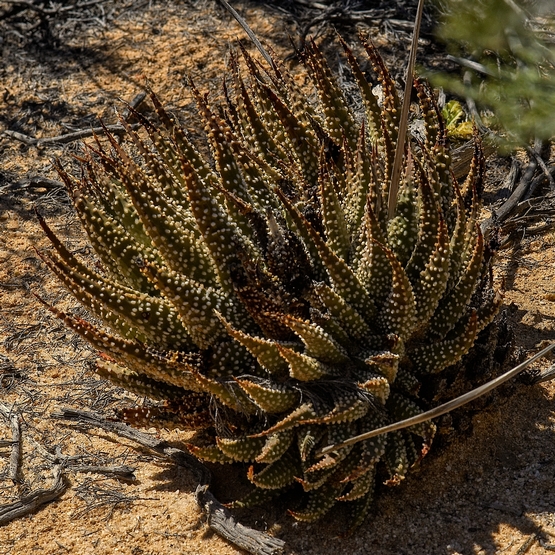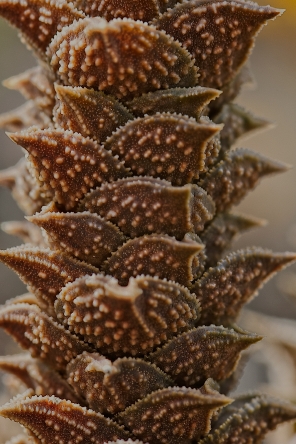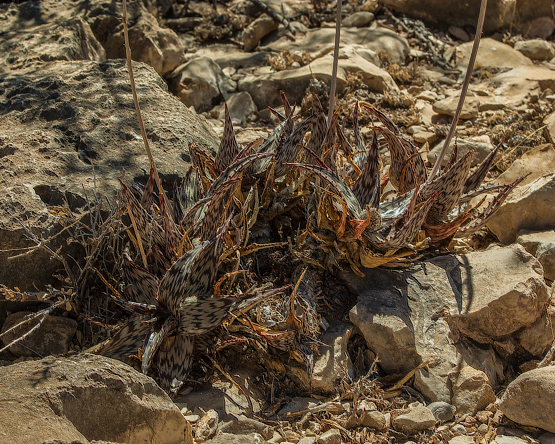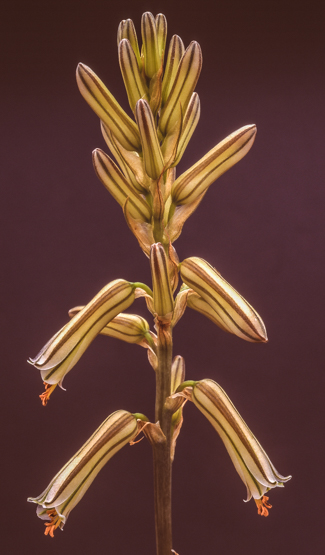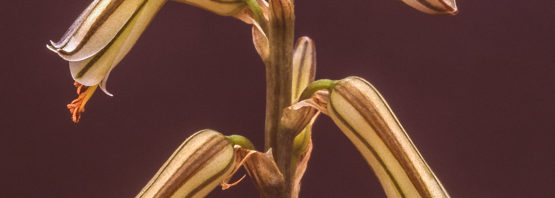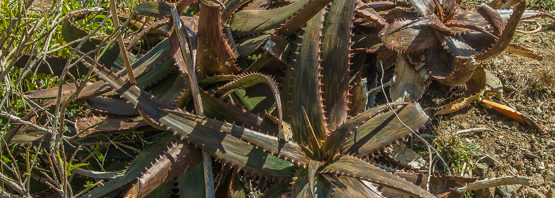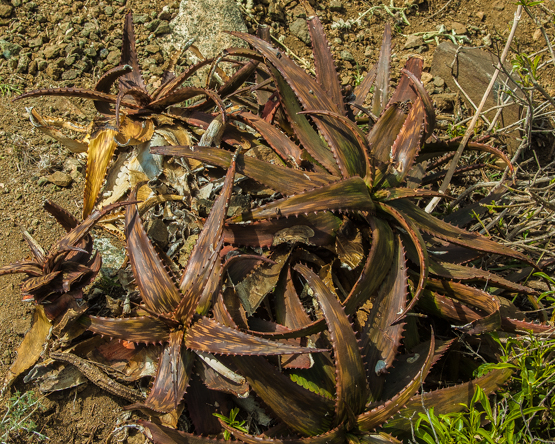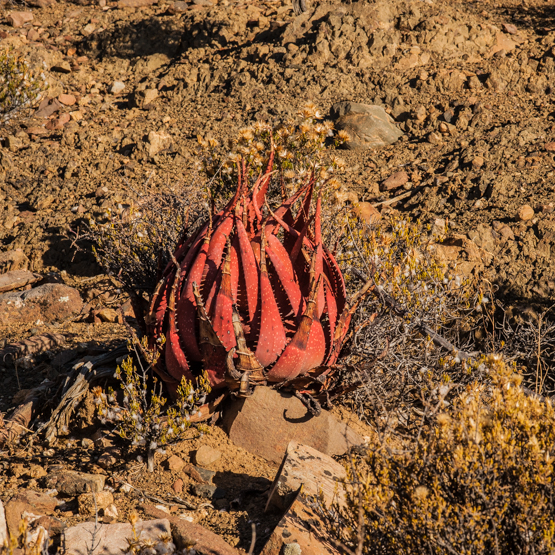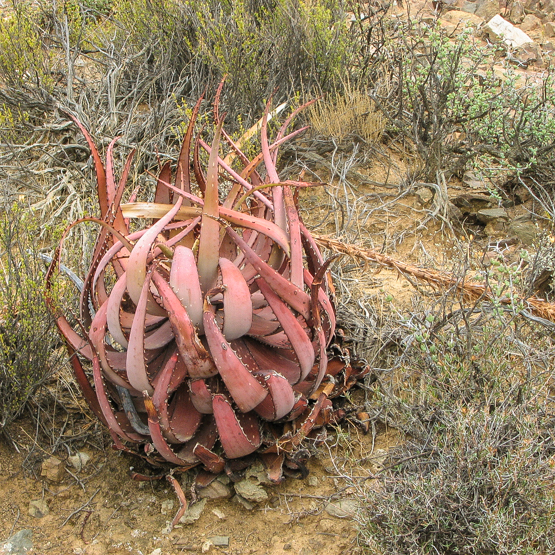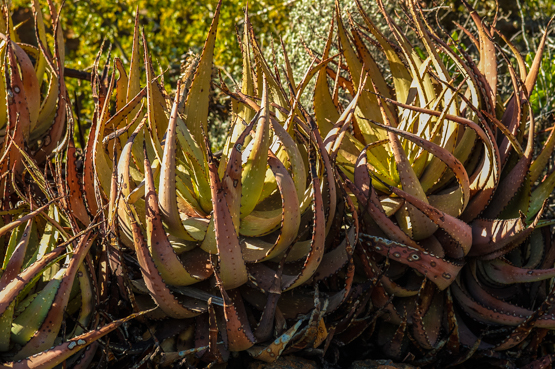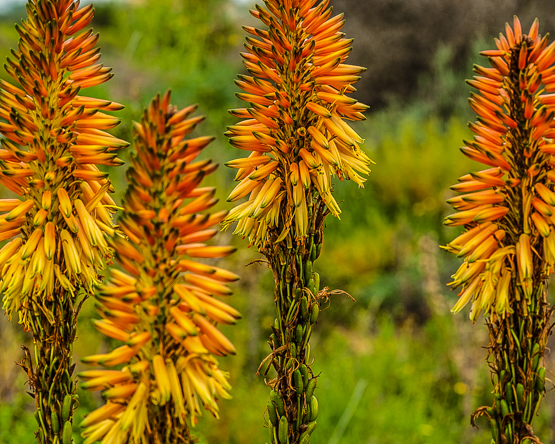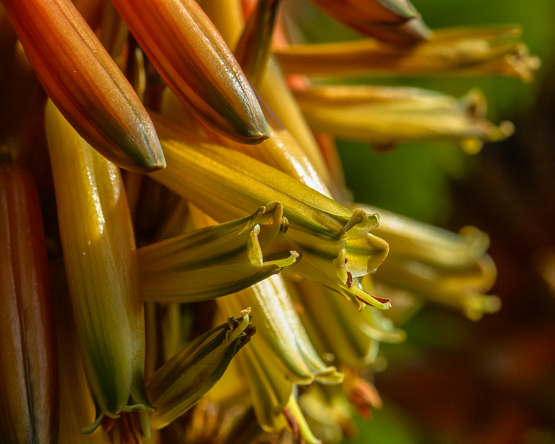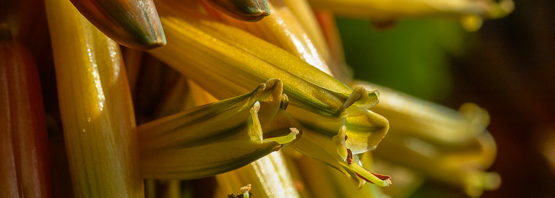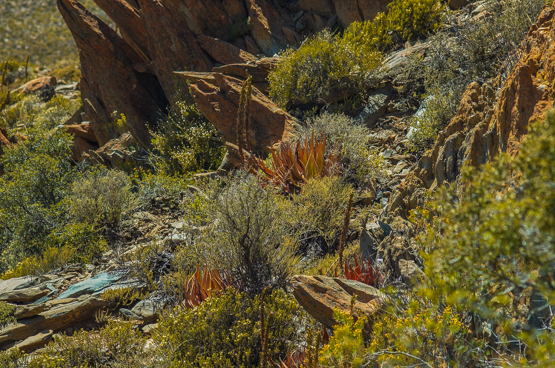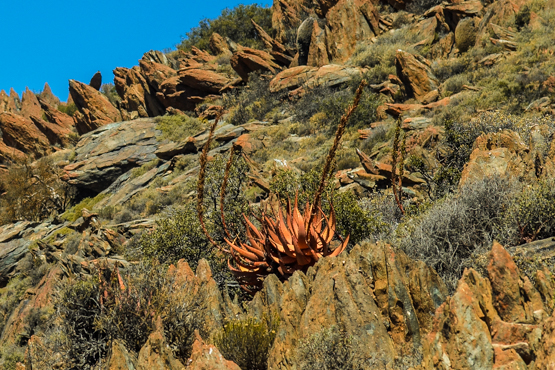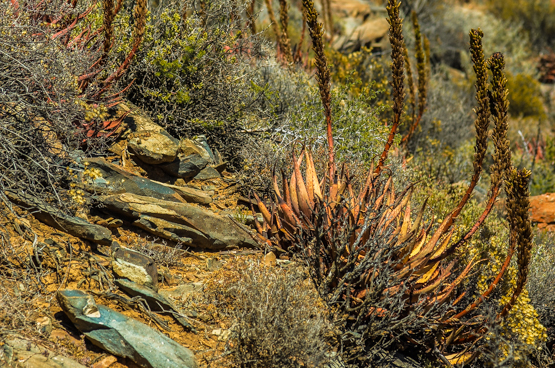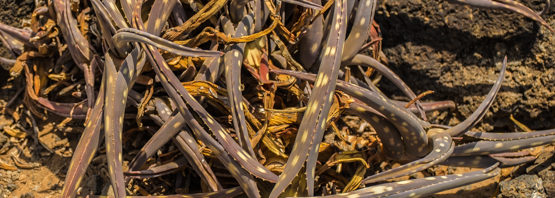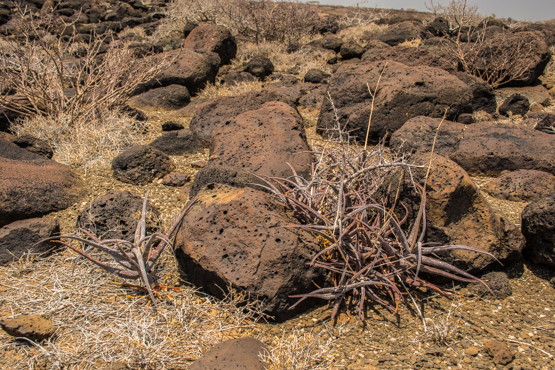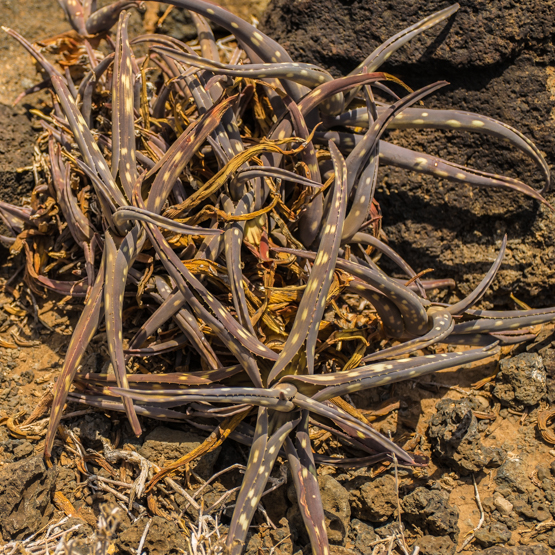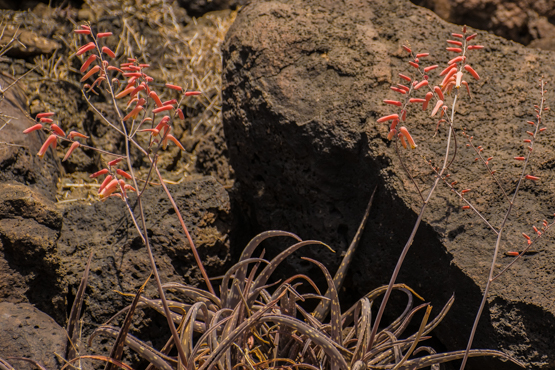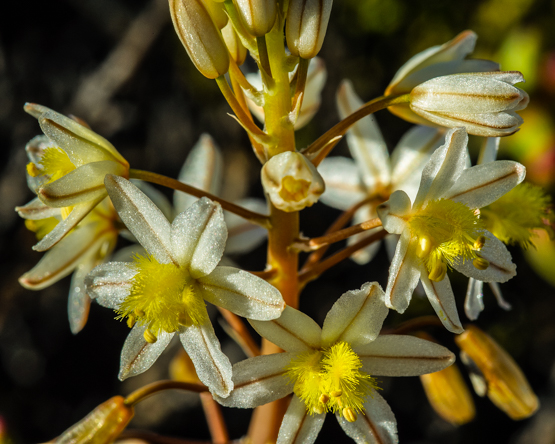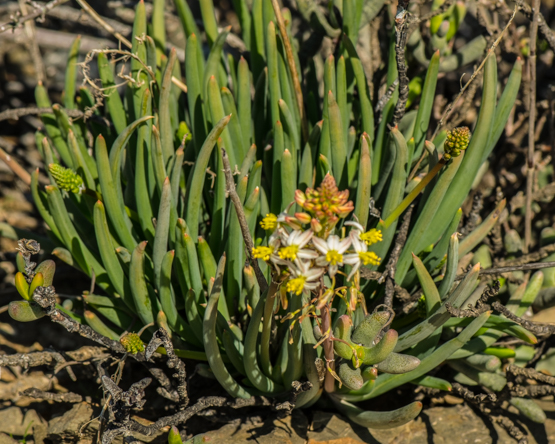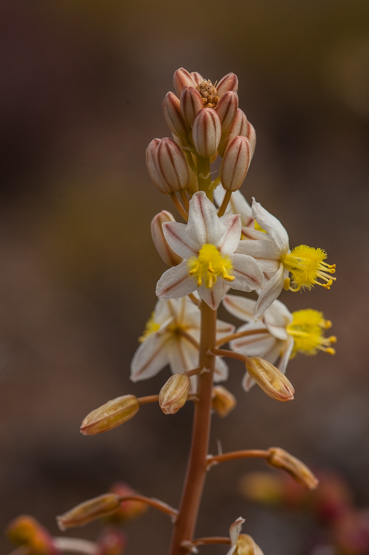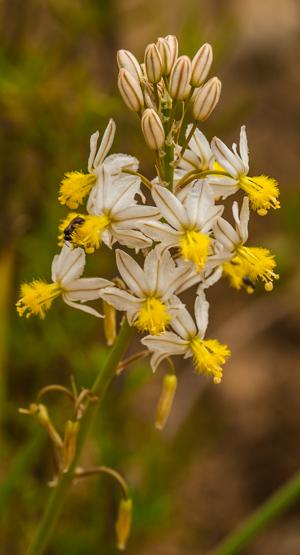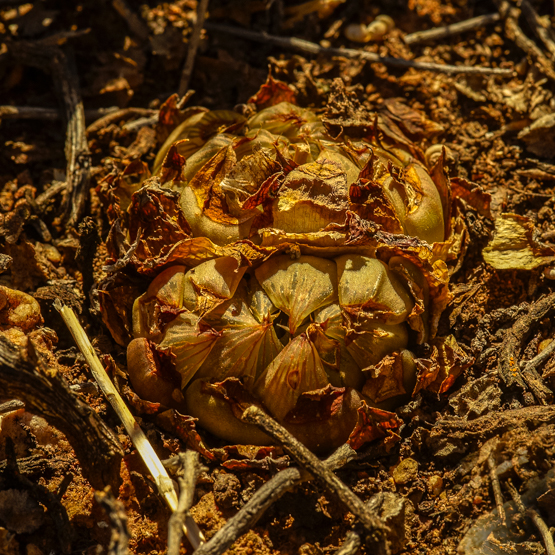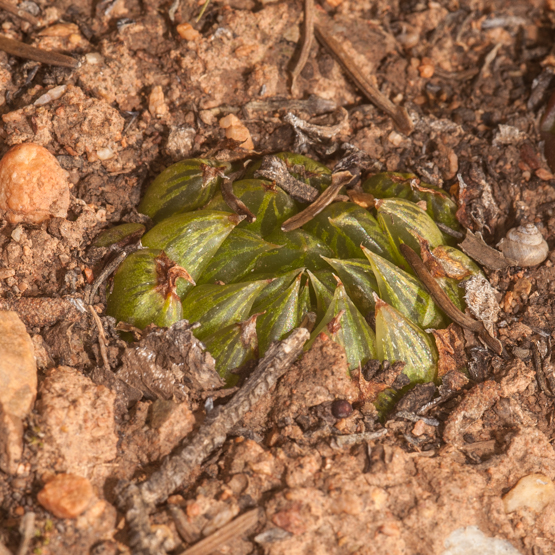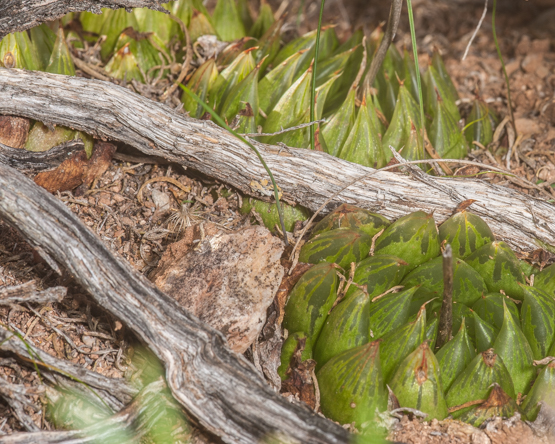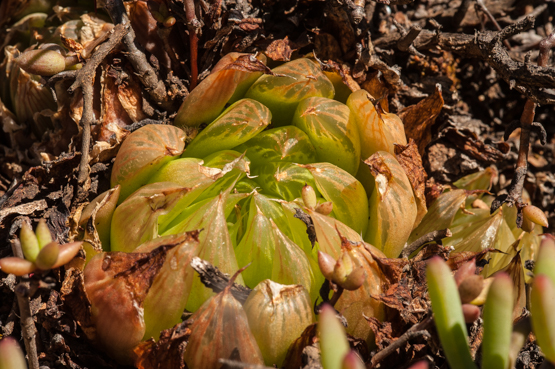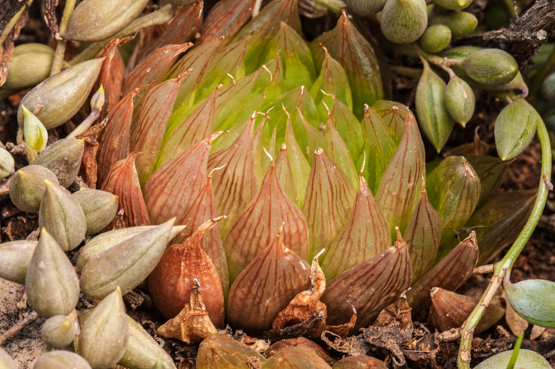A while ago, on a trip from Montagu to the southwest entrance of Anysberg Nature Reserve, friend Marion and I came across a couple of plants we had never seen before.
They grew in a flat area with low shrubs and other plants, including several specimens of Haworthia pumila.
It didn’t require a lot of brain power to assume that the unknown plants were hybrids, with H. pumila as one parent -almost certainly the mother. What the other parent might be remained guess work, because even after a long search in the area, we did not come across a likely candidate.
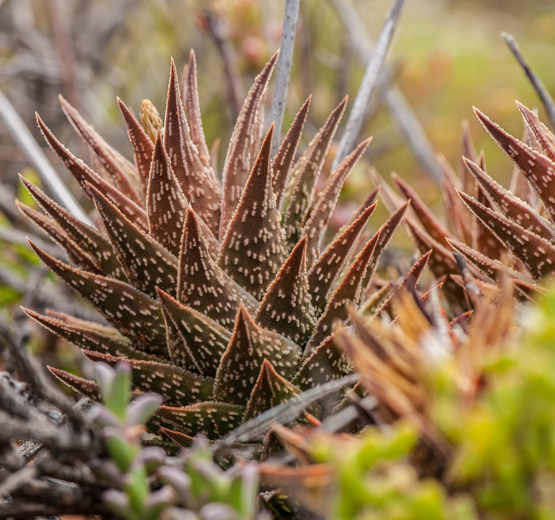
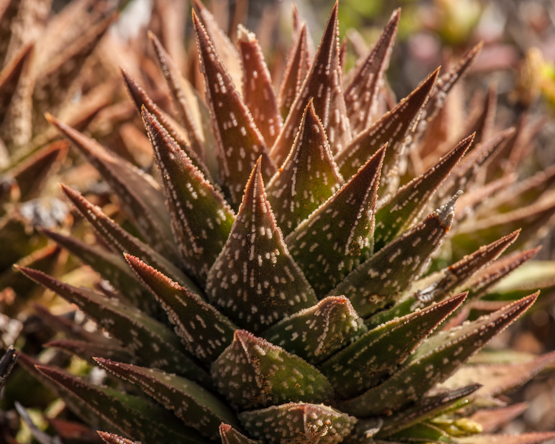
Last week I was looking up some information for a talk on succulents in the Montagu area that I was asked to give and that search solved the problem of the missing father.
In Haworthia revisited, Bruce Bayer states under H. pumila :”It hybridizes with Astroloba muricata (= A. corrugata, FN)”
In the Illustrated Handbook of Succulent Plants, N. L. Meyer & G. F. Smith mention the genus X Astroworthia with 1 member (xA. bicarinata), remarking: “This is the naturally occurring hybrid Astroloba corrugata x Haworthia margaretifera (= H. pumila, FN)”
The pictures below show the proud parents:
H. pumila and A. corrugata resp.
